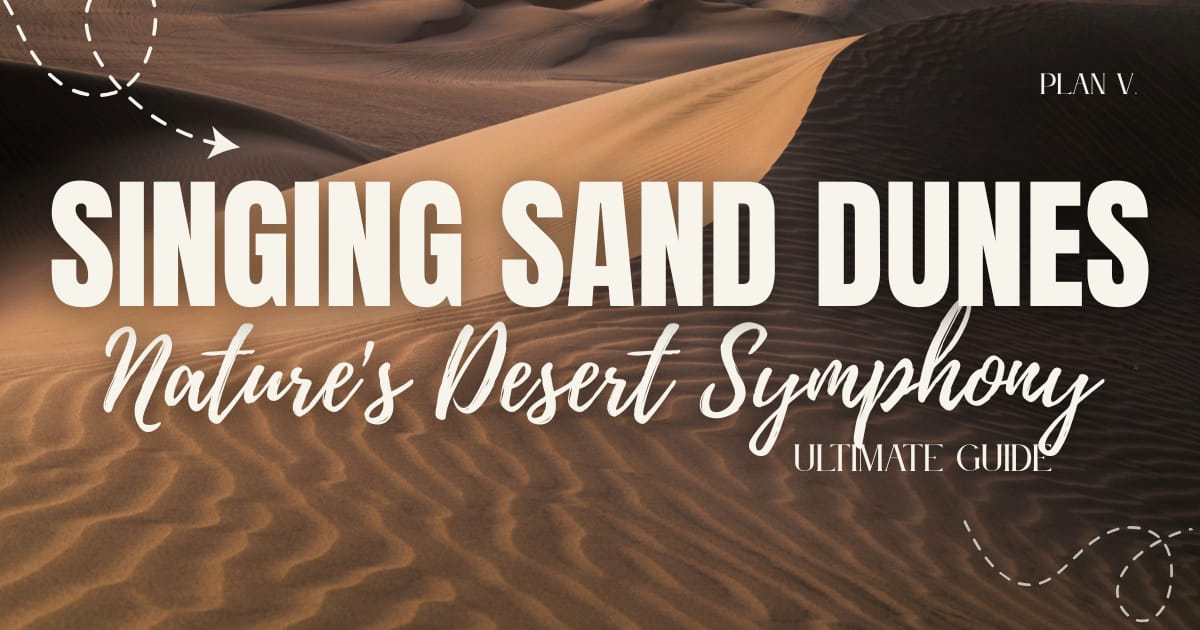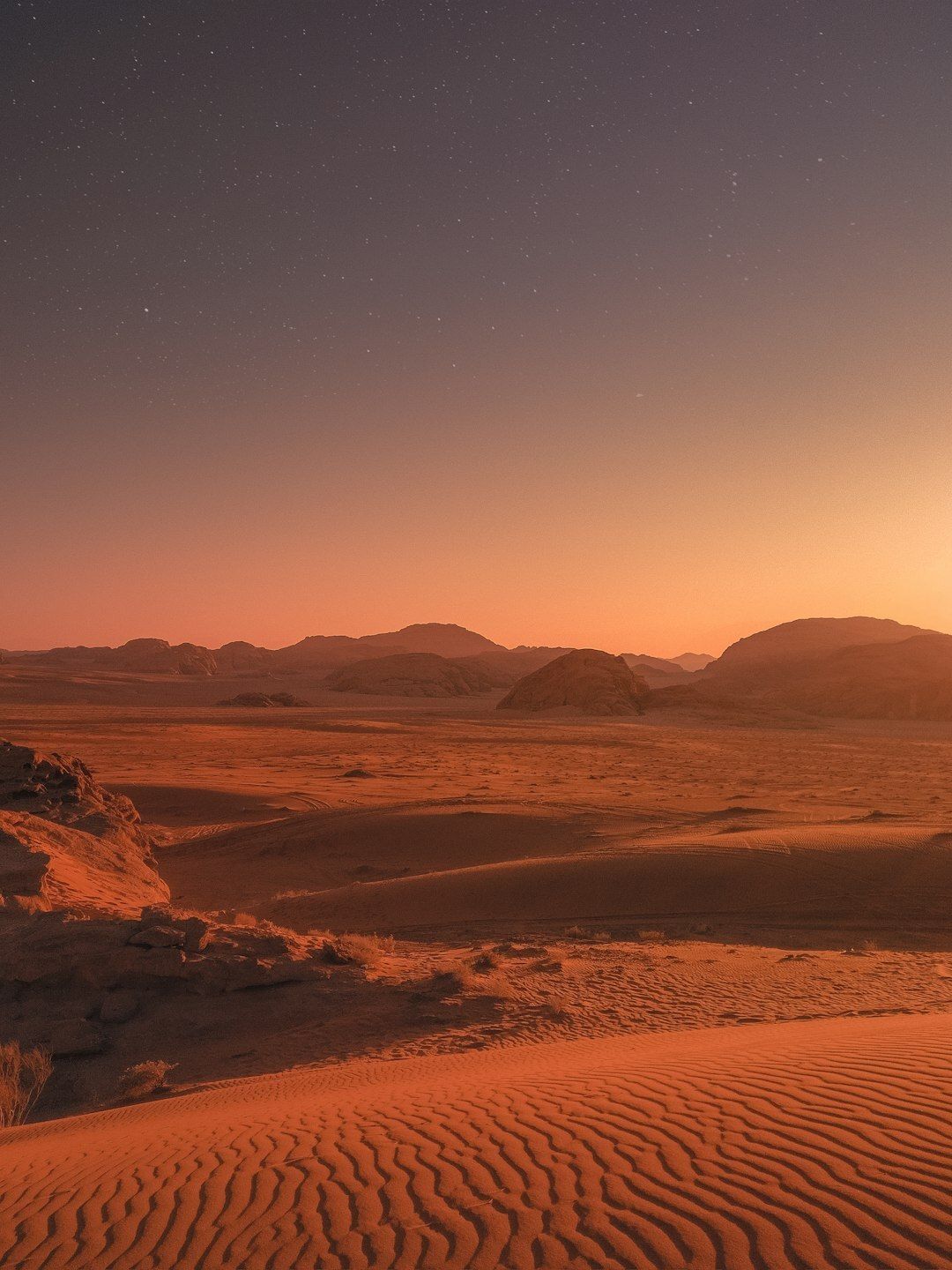- Plan V.
- Posts
- ⌛️🎶 Nature's Desert Symphony Waiting to Be Discovered: Singing Sand Dunes🏜️
⌛️🎶 Nature's Desert Symphony Waiting to Be Discovered: Singing Sand Dunes🏜️
From North America to Asia, welcome to the world of singing sand dunes, where the desert literally speaks to those willing to listen.
Smart leaders don’t write books alone.

You built your business with a team. Your book should be no different.
Author.Inc helps founders and executives turn their ideas into world-class books that build revenue, reputation, and reach.
Their team – the same people behind projects with Tim Ferriss and Codie Sanchez – knows how to turn your expertise into something that moves markets.
Schedule a complimentary 15-minute call with Author.Inc’s co-founder to map out your Book Blueprint to identify your audience, angles, and ROI.
Do this before you commit a cent, or sentence. If it’s a go, they’ll show you how to write and publish it at a world-class level.
If it’s a wait, you just avoided wasting time and money.

You're standing in the middle of nowhere, surrounded by towering dunes, when suddenly the sand beneath your feet starts humming a low, haunting melody. No, you're not losing it—you've just stumbled upon one of nature's coolest acoustic tricks. Welcome to the world of singing sand dunes, where the desert literally speaks to those willing to listen.

Practical Travel Tips for Dune Chasers 🏜️
Most singing sand dunes are remote. Qatar's dunes are accessible by a regular sedan car from Doha, while others may require a 4WD vehicle or a guided tour. Research the road conditions in your specific destination before heading out.
🧴 What to bring
| ⌛️ Pro tips
|
Fact-based news without bias awaits. Make 1440 your choice today.
Overwhelmed by biased news? Cut through the clutter and get straight facts with your daily 1440 digest. From politics to sports, join millions who start their day informed.
What are singing sand dunes? 🎶🏜️
Singing sand dunes are geological formations that produce sounds when their grains tumble down their slopes. The sounds range from soft rumbles and roars to musical notes and hisses.
These sounds can be as loud as a lawnmower, reaching over 100 decibels. People have called them singing sands, whistling sands, booming sands, or barking sands, depending on the specific sounds they make.
In the 13th century, while Marco Polo was crossing the Gobi Desert, he heard these sounds and attributed them to spirits and demons filling the air with the resonance of their musical instruments and drums.
According to local legends in places like the UAE, evil spirits supposedly whisper names to disorient travelers and drag them into danger through the moaning tones of the dunes. Pretty spooky stuff when you're alone in the desert, right?

The Science Behind the Song 🥁☀️
There is actually a scientific explanation for this spooky phenomenon.
In singing dunes, the sand crystals are well-rounded and covered in a silica-water gel coating called desert glaze. When the sand is hot and very dry and tumbles down the dune face, the crystals vibrate against one another, producing tiny sound waves that synchronize and amplify each other.
Each grain creates a local sound wave as it tumbles through the fluidized sand layer, colliding with other grains about 100 times per second.
Different types of seismic waves create various sounds—primary waves produce booming sounds that travel through the entire dune, while Rayleigh waves spread across the surface and cause burping sounds.
But all depends on the kind of dunes. If the sand grains are uniform in size, the dune produces a pure tone; if they're different sizes, they produce several notes to form a chord. The Moroccan dunes moan at a steady 105 Hz (a low G sharp), while Omani dunes sing a nine-note range from 90 to 150 Hz. The sound is 100% perceptible to human ears—no special equipment needed, though scientists use geophones to study the seismic waves in detail.
SPANISH SECTION:
¿Cuáles son las restricciones de equipaje para un crucero?
Lo recomendable es siempre leer lo que cada compañía permite y restringe, así evitarás molestias a la hora de embarcar.
Entre los objetos que la industria naval prohibe a la hora de abordar están con el fin de salvaguardar la integridad y seguridad de los pasajeros son:
Armas de fuego.
Alcohol.
Municiones.
Sustancias explosivas e inflamables.
Cometas o papalotes.
Patinetas, patines y scooters, nada de practicar skateboard en cubierta.
Fuegos artificiales.
Gases.
Where to Find These Musical Marvels? 🎤🏜️
Only about three dozen known locations worldwide have singing sand dunes, making them seriously rare. Here are some of the best spots for slow travelers seeking off-the-beaten-path experiences:
North America 🌎
| Asia 🌏
| Middle East & Africa 🌍
|

Gobi Desert.
When and How to Experience the Symphony? 🎶☀️
The sand must be hot and extremely dry to sing—dunes won't produce sounds in winter when increased internal moisture causes grains to stick together. For smaller dunes, the sand must be hot and the wind still, and they may only sing on cloudless days when the sun can efficiently dry the slip face.
For desert locations like Qatar, visit during cooler months (November to March), ideally in early morning or late afternoon.
For the Great Sand Dunes in Colorado, late May through early June or September to October offer ideal temperatures and conditions.
Avoid visiting right after rain—the sand needs to be bone dry.
In summer, avoid midday when sand temperatures can reach 150°F.
Before you try, you must know: The best results come with three or more people sitting at the highest part of a ridge and moving downwards together—it's not about speed but how much sand you can push away. You can also slide down the dunes, walk across them, or simply wait for the wind to create natural avalanches. The sound has been compared to a low note of a didgeridoo or a low-flying plane.
See you next time,

Fact-based news without bias awaits. Make 1440 your choice today.
Overwhelmed by biased news? Cut through the clutter and get straight facts with your daily 1440 digest. From politics to sports, join millions who start their day informed.



Reply